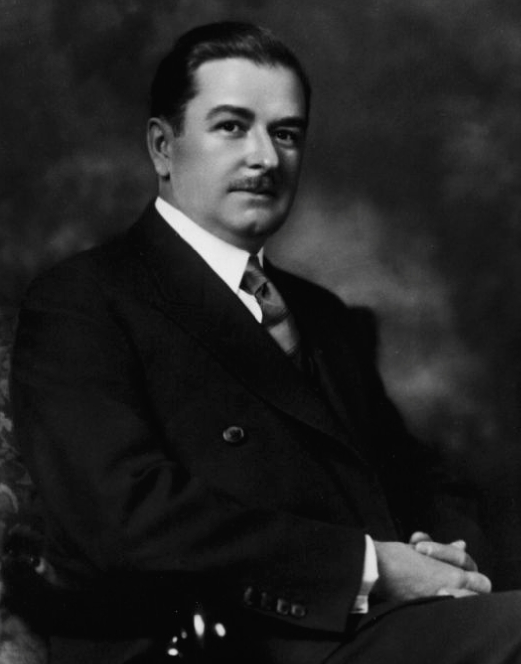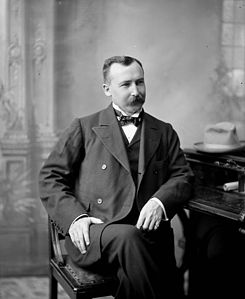Write a blog that hyper-links your research on the characters in GGRW according to the pages assigned to you. Be sure to make use of Jane Flicks’ GGRW reading notes on your reading list.
PAGES 217 – 229, 1993 Edition / Pages 259 – 274, 2007 Edition

Elijah Harper
Eli Stands Alone
“… Elijah had come to enjoy the small pleasures of resistance, knowing that each time Duplessis opened the gates a little too much or turned on the light a little too late, it was because he was there.” (King 260)
Within the novel, Eli is the main opponent of the Balene Dam’s construction and completion. His real-life counterpart is Elijah Harper, an Oji-Cree politician who fought against the Meech Lake Constitutional Accord of 1990 with the softest of “no”s. With a lifted eagle feather, he initiated a filibuster by voting against “a debate that did not allow full consultation with the First Nations” (Flick 150).
Flick also believes that the name may have come from the Pete Standing Alone, narrator of Circle of the Sun (150). This documentary is the first recording of a Southern Albertan Aboriginal tribe’s Sun Dance which allowed by the tribal leaders out of fear for the potential extinction of their tradition.
The novel’s Eli echoes both figures. His opposition towards the “damn thing” (King 259) alludes to Elijah Harper’s solitary stance against the Meech Lake Accord. The reference to Pete Standing Alone and the documentary he narrates fits with the tensions in the novel regarding the dam’s threatening of the Blackfoot traditions which include the natural course of the waterway and the Sun Dance.

Maurice Duplessis
Duplessis International Associates
“Along with the injunction that forbade Duplessis from raising or lowering the level of the river beyond a certain point…” (King 260)
Although the “Duplessis International Associates” is not a character, but a construction firm, the characters and narrator of King’s novel refer to the organization as if it were a living, breathing person. Eli refers to Duplessis as “[turning] on the [floodlight] a little too late” (King 260), and Bursum refers to Duplessis having provided the topographical map for Parliament Lake to him, personifying the company’s actions. The elimination of the latter part of the firm’s title leaves “Duplessis,” which creates the effect of being a character’s name.
King’s selective cutting is intentional. According to Flick, Duplessis “invokes both duplicity and the political corruption of the Duplessis régime in Québec” (151).

Sir Clifford Sifton
Clifford Sifton
“… Sifton told [Eli] that they were going to tear the cabin down.” (King 262)
Eli discusses the floodlights with the dam’s engineer Sifton, whose name alludes to Sir Clifford Sifton (1861-1929). Under Prime Minister Wilfrid Laurier’s government, Sifton assumed the position of Federal minister of the Interior as well as Superintendent of Indian Affairs from 1896 (Flick 150). He was responsible for the Prarie West movement, specifically encouraging immigrants from east-central European countries to adapt the lands into agrarian plots. This came at the expense of categorizing immigrants who did not fit those moulds (such as Asians, Jews and Blacks) as undesirable. More pertinent to the tension of Eli’s potential deracination within the novel, the real-life counterpart to Sifton’s character was also responsible for the mass displacement of First Nations populations in the prairie west.

Holm O. Bursum
Bill Bursum
“… Bursum had looked at the topgraphical map that Duplessis provided and picked out the best piece of property on the lake.” (King 266)
Flick writes that Bursum is a combination of “two men famous for their hostility to Indians” (148).
The first of which is Holm O. Bursum, a senator from New Mexico who proposed the Bursum Bill of 1921 which was seen as a furtive attempt to seize Pueblo lands. This calculating maneuver resonates in the GGRW Bursum’s purchase of Parliament Lake land. Bursum’s acquisition of the lakefront property is a covert attempt to take advantage of the financial benefits of owning such a lot. The description of the land, coloured by Bursum’s greed demonstrates his concealed intentions: “Secluded. Exclusive. Valuable” (266).
The second part to his name refers to William R. Cody who manipulated Indians for the purposes of entertainment. The Buffalo Bill Cody’s Wild West Show exploited the white settler’s romantic notions of conquest, and tragically took advantage of the Aboriginal peoples of Nebraska.
 Thought Woman
Thought Woman
“Thought Woman floats around in that ocean for a long time…” (King 269)
Thought Woman becomes the main subject of discussion between the narrator and Coyote, and is part of a creation story that aims to elaborate upon the abundance of water—an apt theme in regards to the novel’s main conflict. Flick writes that she is a creation figure of Navajo mythology who, like her namesake, thinks the world into existence (159).
Furthermore, Thought Woman also appears in Ceremony, a novel by Leslie Marmon Silko that explores the oral cultures of the Navajo and the Pueblo people.
 A. A. Gabriel, Canadian Security and Intelligence Service
A. A. Gabriel, Canadian Security and Intelligence Service
“Thought Woman, says Thought Woman. Mary, says A. A. Gabriel. And he writes that down.” (King 270)
A. Gabriel refers to the biblical figure of Archangel Gabriel who announces to Virgin Mary that she will conceive the Son of God. King’s character is a bureaucrat of the Canadian Security and Intelligence Service. His refusal to recognize Thought Woman’s Indian name by renaming her as Mary. Historically, First Nations had their names changed, with the majority of them being baptismal names.
A. Gabriel shouts to Thought Woman as she departs: “We can always find another [Mary], you know” (King 272), perhaps implying that he will simply force the name upon someone else.
The Motif of Geography and Land Ownership
In this passage, many of these characters (both within the novel and in historical contexts) appear to be linked and grounded by the underlying motif of geography land ownership. Eli is awakened by the invasive floodlight of the dam and the unnatural ebb and flow of the contained water within his solitary cabin by the Balene Dam. Duplessis International Associates, referred to by only as “Duplessis,” looms ominously over Eli’s existence, taunting him with the petty play of the floodlights as they attempt to enforce dominion over Parliament Lake’s waters and surrounding lands. Sifton, the dam’s engineer says to Eli that the safety of the dam is not for him, but “ours” (259), referring to the security of his workers. This selfish quip echoes Sir Clifford Sifton’s ignorance of the land’s original owners and traditions present within his Prairie West movement. Bursum uses a Duplessis map—a symbol of the white settler’s false claims onto Aboriginal property—and seizes land for financial gain as elaborated above.
Thought Woman and A. A. Gabriel have their connections to “geography” less apparent than the others I have discussed, yet we can discover the themes of ownership and control within their first meeting and the card’s song. A. A. Gabriel shows to Thought Woman the side of his business card that details his affiliation to a security service which prompts her to ask whether his line of work deals with insurance or burglar alarms (King 269). “Insurance” and “burglar alarms” introduces the concepts of government, money and policing with land, and the potential authority—no matter how arbitrary it may be—that accompanies such elements. A. A. Gabriel seems to embody that authority, dressed in the attire of government officials. He flips the card to announce his status as Heavenly Host, and the card sings: “Hosanna da.” Coyote naturally believes the song to then be of biblical origins, but the unknown narrator corrects the trickster figure, and says the song goes “Hosanna da, our home on Natives’ land” (270) instead. A twist upon the Canadian national anthem, the lyrical change to the possessive evokes the themes of land ownership and perhaps criticizes the notion of the anthem. Anthems are meant to eulogize the country’s history, but the lack of the possessive and moreover, the lack in capitalization of “native” in the original verse seems to ignore the original owners of Canadian land.
Works Cited
Flick, Jane. “Reading Notes for Thomas King’s Green Grass, Running Water.” Canadian Literature 161-162 (1999): 140-172. Web. 28 March 2016.
King, Thomas. Green Grass Running Water. Toronto: Harper Collins, 2007. Print.